Heaalih
Jedi
On the occasion of the Eastern Economic Forum 2023 in Vladivostock, and the travel of Putin, this reminded me of a text that I read a few years ago, in the book by Jacques Sourmail, a French esoteric mathematician: "Initiation to esoteric politics". It makes more sense today :
(translated with deepl, I hope it's not too bad...)
(translated with deepl, I hope it's not too bad...)
We now come to the third promise. A new hotbed of humanism: this is the meaning we have given to the third little flame dancing in that magnificent glow at the end of the "Damascus perspective".
This promise is linked to a prophecy that continues to inspire great hope in many Russians: the prophecy - or myth - of the Third Rome. What is it about?
To explain its origins and how it came about, we need to go back quite a long way, to the time when the proud city of Troy flourished, abundant in wealth and fearsome in its warrior ardour.
Ilion of the beautiful towers" was then dominated by a sacred citadel where the temple of Athena stood. There, at the heart of the temple, in its inviolable Adyton (1), was a mysterious object of an obscure nature (2), an object that could not be defined, which the Trojans called the Palladion, and which they considered to be the receptacle of a supernatural force.
Kept with all the more jealous vigilance and trembling veneration, it was regarded as the Mother Source from which the Trojan capital derived all its glory, power and prosperity.
By stealing it, Ulysses and Diomedes placed Priam's city at the mercy of its attackers, whose black ships came from the four winds of Greece.
The Trojans had only succeeded in repelling the assaults of so many attackers, they had only been able to withstand such a long siege, galvanised by the radiations of the cabalistic object. Deprived of this strength, deprived of its "ancient and holy safeguard" (3), their towers, their ramparts, their very heroes could no longer protect them from the fury of the Greeks. The city fell.
After the sacking, the magic effigy found its way, somehow (1), to Rome, where its presence began the glorious fortunes of the City of Seven Hills.
Centuries later, the emperor Constantine had the Palladion transported in great secrecy to the new city he had just created on the banks of the Bosphorus. Constantinople, the capital of a new empire lasting a thousand years (2), received the most precious of leavenings.
The spirit that had successively animated Troy and Rome passed through it and animated it in its turn.
Constantinople preserved, amplified and finally bequeathed to the dying European world everything that had been prophetic in Troy, philosophical in Rome, mystical in Troy (3) and humanistic in Rome.
How did the impregnable city, which for so long had withstood the assaults of the janissaries and resisted the appetites of the lords of the turban, suddenly succumb to the thrust of a single atom (5)?
This can only be explained by assuming that the generator that powered her defences was stolen from her.
Stolen, the talisman that protected his life? Stolen, the Palladion?
Yes, stolen, and buried somewhere in the Balkans...
Here prophecy takes over from legend; prophecy according to which an illustrious Russian will one day come and, having found the Palladion, will transport it to the east of Constantinople to make it the foundation of the power of a new metropolis (1).
This Russian city, taking on the heritage of Rome and Byzantium, would then appear as the true "Third Rome", destined to become the focal point for spreading a new humanism throughout the world.
Although obviously not a Russian, Lord Byron took this prophecy seriously enough to make the search for the Palladion his own quest for the Grail. Was it only his philhellenism, his sympathies for the cause of Greek independence, that prompted the divine lame man to come and die under the Hellenic sky, or had his fatal and suffering genius picked up some signal emitted by the buried Palladion?
Let's talk about its death: the capture of Constantinople by the Turks (4) may well have been nothing more than the consequence of the loss of the Palladion by the Greeks. How did the impregnable city, which for so long had withstood the assaults of the janissaries and resisted the appetites of the lords of the turban, suddenly succumb to the thrust of a single atom (5)?
This can only be explained by assuming that the generator that powered her defences was stolen from her.
Stolen, the talisman that protected his life? Stolen, the Palladion?
Yes, stolen, and buried somewhere in the Balkans...
Here prophecy takes over from legend; prophecy according to which an illustrious Russian will one day come and, having found the Palladion, will transport it to the east of Constantinople to make it the foundation of the power of a new metropolis (1).
This Russian city, taking on the heritage of Rome and Byzantium, would then appear as the true "Third Rome", destined to become the focal point for spreading a new humanism throughout the world.
Although obviously not a Russian, Lord Byron took this prophecy seriously enough to make the search for the Palladion his own quest for the Grail. Was it only his philhellenism, his sympathies for the cause of Greek independence, that prompted the divine lame man to come and die under the Hellenic sky, or had his fatal and suffering genius picked up some signal emitted by the buried Palladion?
Without a doubt, the prophecy of the Third Rome fascinated the cantor of Childe-Harold, who thought he had found a role to suit him. An occultist by instinct, he was drawn to the Palladion. He sought it out everywhere. In the forests of Epirus, in the rugged mountains of Arcadia, in all the caves of the Morea; on bluish islands, shining promontories and golden coves; in the whole glittering circle of Greece. All in vain.
These are the facts as they can be found in documents, legend and history; and here is the commentary and interpretation we propose.
First, the nature of the Palladion.
What formidable power this sacred effigy possesses! No sooner had the industrious Odysseus stolen it from the Trojans than they saw their city succumb to Greek attack. Rome let it leave for Constantinople: the Eternal City entered the night. In Constantinople, at last, it was concealed, and here was the inviolable Queen of the Bosphorus surrendering to the arms of Mehmet II...
Could a simple "statuette" have been so influential? It's hard to imagine.
Let's think instead of bringing the Palladion closer to an object that is no less mysterious than it: this black stone of meteorite origin in which the Arabs, long before Islam, already saw a receptacle for celestial forces, and which they continue to venerate today in Makka (1), after having taken care to enclose it in the great mausoleum
protective mausoleum of the Ka'ba (2).
We believe that the Palladion and the Black Stone of Arabia are of the same nature and origin, that they are aeroliths, rocks that have fallen from space, meteorites filled with a radioactivity that is not natural but supernatural.
Let us note that Constantine took the precaution of burying the Palladion; that the Trojans kept it cautiously behind the thick walls of the Adyton; that Virgil says he saw "sparkling flames" bursting from it; and that the Arabs keep their stone locked inside the sarcophagus of the Ka'ba, whose brocade cover they change every year.
Is it just a question of protecting these objects? Or is it more a question of protecting oneself against them? Because, although they are "metaphysical", their emanations are no less dangerous if you expose yourself to them carelessly. If they don't burn the flesh, they scorch the mind; and it undoubtedly takes a very special kind of psychic armour to withstand their rays for long.
We say that these objects were carved from fragments of Shooting Stars by a great race of vanished magicians, who fashioned them in the effigy of the stars.
These sculpted monoliths, stone stars from the stars, boiling boulders from an obscure disaster, vibrate like powerful talismans, capable, where they are buried, of superheating the ethers by filling them with heavy spiritual atoms (1).
When one of these pentacles is planted anywhere in a country, a kind of "heat sheet" is formed in the surrounding ethers, and its heat alone draws to it, from all parts of the country, all the superior men, noble natures, imaginative intellects and enterprising, mobile characters of the people who live there.
the people who live there.
A "national cauldron" would immediately begin to boil. Around its edges will be built either a holy city or a metropolis of light, but always a city towards which talents and eyes will converge; a city where people will write, govern, pray, plan for war, and bury the great servants of the nation.
We are not far from thinking that every land that has seen a radiant city emerge from it carries in its bosom, or has carried in its bowels, a similar talisman; That mingled with the clay of Alexandria or the silt of Florence, buried in the sands of Jerusalem or under the limestone of Athens, buried in the clay depths of the Parisian subsoil or buried in the shales of London, such star-stones are present, which have fertilised these illustrious places and brought forth the splendid corollas of light that continue to enchant our eyes and our imaginations.
But who, it may be asked, placed them there? Let the author remain silent on this point.
Let us return to the Palladion. Does this not sound like a grain of spiritual pollen carried by the wind, and which, wherever it is deposited, fertilises the soil?
It made Troy grow, it made Rome grow, and here it is in Constantinople. The son of Saint Helen (2) had the spore from the stars hidden in the base of an enormous marble column. The stellar object began to act. By virtue of the mysterious power it contained, Byzantium, plucked from nothing by the sheer will of one Caesar, took its place at the pinnacle of civilisation for over a thousand years. Monks and philosophers converged on Byzantium, bringing to metaphysics and religion a superiority of light that astonished the world. It became one of those sacred places where heaven seemed to communicate with earth through exceptional souls placed in men of genius. With its revolving beacons, the august city, a beacon of culture, enlightens the peoples of the world. In the early days of their expansion, the Arabs spontaneously turned to it as their model. As the centuries passed, it was Byzantium that the masters of Iran, the Turkish sultans and the Slav tsars envied and admired.
Here we are in the year 1000: in the dark regions that the lands of the West have become since the fall of Rome, what hearth remains lit, where people continue to read and write when almost everywhere else the use of these tools has been lost? What hearth still persists in shining in the barbaric night, if not Venice, the Byzantine pearl, linked to the metropolis by an invisible cord along which circulate the nourishing fluids of the hidden Basileus (1)?
The emperors of Byzantium worked hard to ensure that the Roman heritage contained in the Palladion flourished. In this way, the sacred effigy would turn the city of the Golden Horn, a city with no past and no memory, into the crucible of a new humanism.
Constantinople blended the agility of the Greek spirit and its love of life with the somewhat stiff and severe thinking of the Latins; it added to the moral and legal genius of the Romans that part of generosity and hedonism that came from its Eastern ties. As a result, the serious humanism of the first Rome, softened by the "Attic honey" of the second, eventually gave rise to the incomparable culture that, escaping from the walls of Byzantium just as the Turks overthrew them, spread to the West, where it passed into the hearts and minds of the men of the Renaissance.
For what we call "Renaissance humanism" is none other than Byzantine humanism: the great cultural and spiritual lake long held in the reservoir of the Eastern Roman Empire, whose waters spilled over to us when the Turks burst the dykes.
The fall of Constantinople was the death knell of our Middle Ages, submerged by this breach in the dam and by the flood that spread in its wake (1).
Without question, our reborn culture is the offspring of Byzantine humanism (2). From this perspective, the fall of Constantinople appears to be a providential event to which Western Europe owes its awakening; and since this fall was the occult consequence of the abduction of the Palladion, we must admit that whoever was able to extract the precious talisman from the foot of the column where Constantine had walled it up, and carry it outside the city walls, knew exactly what he was doing and was working as a conscious agent of the Forces of Light.
Now, if prophecy is to be believed, another 'agent' is to come into possession of the Star Stone and set out to cement it in a Russian city to the east of Constantinople, so that it too will become the home of a regenerated humanism.
We say that this man is none other than Alexander Solzhenitsyn, and we affirm that this city is Vladivostok.
Firstly, elementary geopolitical considerations lead us to believe that Vladivostok will be called upon to play the role of a major centre of economic development in the Russia of tomorrow.
The argument goes like this: the loss of the Baltic States, compounded by the amputation of Ukraine, has deprived Western Russia of its main windows on the sea. The waters of the Baltic, the Black Sea and the Mediterranean can now only be seen and greeted from afar. Under these conditions, how could it not be tempted to turn its attention from this blocked horizon to the blue line of the Pacific?
She might then feel more and more drawn to its eastern confines, to its remote Siberian reaches, to its Asian vistas, with their long coastlines open to the Bering, Okhotsk and Japanese seas, and - beyond - to the immense Pacific whose shores bathe the Americas. It will be all the more inclined to do so as the Pacific, bordered by China, Japan and the United States, will become the most important strategic region on the planet in this century. So where else but on a balcony overlooking the Pacific could we find the new Rome?
On Russia's Siberian coast, Vladivostok has no rivals.
In fact, the rise of Vladivostok was foreshadowed in the last century.
It was at the time of the First World War. Following the blockade of the Baltic by the Prussian fleets and the blockade of the straits (1) by their Turkish allies, Russia no longer had a port in the west to unload a bundle of goods.
If she escaped suffocation, it was only thanks to her Siberian lung: for months, she breathed only through Vladivostok. This led to a gigantic draught of air from the Pacific, which fuelled - for the duration of the war - the activities of the "Master of the Orient" (2).
What a naval blockade of a few weeks only outlined, the great contemporary ebb of European Russia should accomplish: the star of Vladivostok will rise and shine as that of Moscow declines and fades.
But so far we have only talked about the economic development of Vladivostok.
What about its spiritual influence?
Bad Marxists that we are, we don't believe that economic power automatically engenders cultural hegemony, that it is enough to establish it. As esotericists, we are well aware that there is a touch of grace, an air of the miraculous, a touch of the soul, a part of the impalpable that comes from mysterious factors, secret influences, unknown emanations, in all cultural flourishing.
We are simply saying that it is possible, on the basis of vigorous economic expansion, for sudden and beautiful productions of the mind, sudden and beautiful manifestations of human genius, to burst forth, provided that brains are prepared for it, provided that a certain ripening of consciousness has occurred beforehand, provided that the surrounding ethers have been worked on for a long time by the necessary ferments.
Let's assume that in Siberia such expansion has been achieved (1); let's assume that Vladivostok has become Russia's leading centre of industrial and commercial development (2): it will still have to create in its atmosphere that touch of grace, that air of the miraculous, that extra touch of the soul and all those tenuous elements that are indispensable for moving from simple material wealth to spiritual fruitfulness.
Where will they come from? From the source that gave Troy, then Rome, and finally Constantinople their legendary dimension and fabulous aura; from the source that made them cradles of civilisation and homelands of a humanism that is constantly reincarnated and constantly reinvented; from that talisman from the stars: the Palladion.
When Aleksandr Solzhenitsyn was finally able to return to his homeland after a long exile in America, it was not from the west that he arrived, but from the Pacific and returned home through the gateway to Vladivostok! This choice intrigued many observers at the time, and many thought it was nothing more than a whim: the Zek simply wanted to cross his homeland from one end to the other, from Siberia to the Caucasus.
Naïve.
In truth, the Zek intended to carry out a specific mission in Vladivostok.
He wanted to bring the Palladion to Vladivostok.
He had secret instructions to do so.
After such a long absence, when he set foot in the land of his ancestors, he brought with him the mysterious pentacle.
How, how and by what means did the incredible object that had fallen from the stars come into his possession? What series of events had thrown it into his hands? These are questions that can only be answered by anecdote.
Let's face it: we don't have the slightest clue as to how the Zek managed it.
Esoterically, the facts are there, and they alone count: Solzhenitsyn had the Palladion in his possession when he entered Vladivostok (1); he no longer had it with him when he left.
The inevitable conclusion: the radioactive effigy now rests somewhere within the city walls.
Vladivostok, the Master of the Orient, the diaphanous lotus of the Siberian confines, the future metropolis of 'Russian California', is now charged with an eminent mission: to become the Third Rome, and as such, to offer the world a new humanism, a synthesis of Latin gravity, Greek subtlety and Mongolian lucidity. An alliance of law, philosophy and theurgy.
Under the powerful impulse of the star fragment implanted in its au- ra, Vladivostok will gather the heritage of the first two Romes; it will add to it that touch of oriental mystagogy that its own intimacy with Asia brings to it (it is not a thousand kilometres to Tokyo, Peking is not much further), and it will thus compose the singular theme of an inventive humanism whose signs and symbols it will scatter throughout the world.
the world.
It would be quite adventurous, so long before its emergence, to attempt to describe the content of a nest of ideas whose silent brood will no doubt occupy several more generations.
On one specific point, however, we will not refrain from lifting a corner of the veil.
The mores of our time clearly show a loosening of the bonds of marriage, a desacralisation of its meaning, with the inevitable consequence of a shortening of "marital life expectancy". Who would think of welcoming this? However you want to see it, however you want to live it, divorce is always divorce, in other words, failure. Let's try to cushion the shockwaves; let's try, with varying degrees of success and elegance, to avoid the shouting and the grimaces: it will always be a failure, and each of the spouses will carry the discomfort with them.
Is it necessary for society to use coercive means to 'save marriage', following the example of puritan America, some of whose states are now adopting anti-divorce legislation? Outlawing divorce in order to outlaw marriage is one of the legal tricks we have become accustomed to from the great Republic of judges!
There are two ways of saving marriage, one external and restrictive, the other entirely internal; one 'American' and silly, the other subtle: in the clearer and more lively spiritual atmosphere in which the new humanism will accustom us to evolve, is it not possible that we will spontaneously rediscover the occult meaning of marriage and the true esoteric value of nuptial rites?
It would then be to a whole inner ceremonial, based once again on the knowledge and adjustment of rhythms, as well as to cycles of intense meditation on the mystery of their future alliance, that a man and a woman wishing to unite would devote most of their retreat time, during a probationary and preparatory period spent seemingly in search of the note of their couple.
What's more, the children born of these unions destined to stand the test of time would no longer be the "fruits of darkness and incontinence" depicted in Plato's biting words, but truly those of clarity and consonance.
Attachments
-
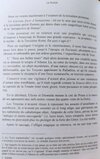 IMG_20230917_154759.jpg2.2 MB · Views: 41
IMG_20230917_154759.jpg2.2 MB · Views: 41 -
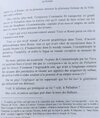 IMG_20230917_154806.jpg1.8 MB · Views: 50
IMG_20230917_154806.jpg1.8 MB · Views: 50 -
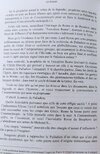 IMG_20230917_154820.jpg2.5 MB · Views: 36
IMG_20230917_154820.jpg2.5 MB · Views: 36 -
 IMG_20230917_154823.jpg2.1 MB · Views: 32
IMG_20230917_154823.jpg2.1 MB · Views: 32 -
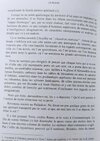 IMG_20230917_154850.jpg2.1 MB · Views: 39
IMG_20230917_154850.jpg2.1 MB · Views: 39 -
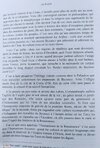 IMG_20230917_154856.jpg2.5 MB · Views: 35
IMG_20230917_154856.jpg2.5 MB · Views: 35 -
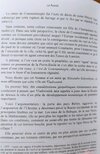 IMG_20230917_154904.jpg2.3 MB · Views: 35
IMG_20230917_154904.jpg2.3 MB · Views: 35 -
 IMG_20230917_154927.jpg2.3 MB · Views: 37
IMG_20230917_154927.jpg2.3 MB · Views: 37 -
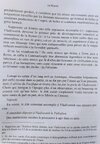 IMG_20230917_154943.jpg2.4 MB · Views: 35
IMG_20230917_154943.jpg2.4 MB · Views: 35 -
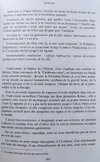 IMG_20230917_154948.jpg2.7 MB · Views: 38
IMG_20230917_154948.jpg2.7 MB · Views: 38 -
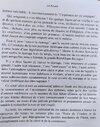 IMG_20230917_155001.jpg2.3 MB · Views: 41
IMG_20230917_155001.jpg2.3 MB · Views: 41


